Sunshine Sequestration
21 April – 28 April 2020
Life for us is both more of the same and yet different since 23 March 2020 when the UK went into lockdown. Some things now seem inconsequential and trivial, but climate change and eco-destruction are still getting worse at a frightening pace. However, if the world can act this fast for the common good – well I might even start to consider hope for the environment – but I will reserve judgement.
This week I have been celebrating, planting out, fretting, investigating and enjoying the sunshine.
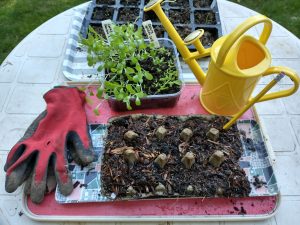
In the News
- ‘Coronavirus plastic waste polluting the environment’ – https://www.dw.com/en/coronavirus-plastic-waste-polluting-the-environment/a-53216807
- I have been wondering about what is going to happen to all that disposable plastic personal protective equipment that medical providers are using. With all this talk about shortages, I have been wondering why at least some of it can’t be made reusable.
- ‘Coronavirus shows the enormous scale of the climate crisis’ – https://www.wired.co.uk/article/coronavirus-climate-change
- ‘Vulnerability to food insecurity since the COVID-19 lockdown’ – https://enuf.org.uk/sites/default/files/resources/report_covid19foodinsecurity-final_1_3.pdf
- The number of adults who are food insecure in Britain is estimated to have quadrupled under the COVID-19 lockdown.
- ‘British farmers turn to homegrown force to bring in the harvest’ – https://www.theguardian.com/environment/2020/apr/25/farmers-turn-to-homegrown-force-to-bring-in-the-harvest
HALO Organising Tip
Life in lockdown has both expanded and contracted.
External interactions have reduced to as close to zero as possible. We cross the road to pass other walkers safely and deliveries are left in the porch, later to be wiped down with disinfectant. I did manage to have a shouty chat with our very friendly letter carrier with the length of the garden path between us. She at least has been issued gloves as PPE.
On the other hand, my and everyone’s domestic life has expanded – ballooned in fact. This is especially full-on with three generations being around all the time. There is a garden here, and that gives us more space, but my heart goes out to people in flats, cramped accommodation and anyone with no garden or access to one.
There is also more to do at home now: even more cooking, cleaning, looking after, chasing, organising, and sorting out. Doing and checking all of this causes a lot of extra busy-ness in my brain.
My big tip, which is probably one that has been said a lot, is both easy and hard to do. Take a quiet moment for yourself to regain your mental strength. I write this diary to reach out to the world; Julian reads and plays the violin with Raphael, who in turn listens to podcasts, learns poems and sings songs from musicals. My father-in-law counts the few remaining birds in the garden. How do you take a moment?
Birds in the back garden
Perhaps the Covid19 pause the world is taking will help to increase the UK’s bird populations, which have been in dramatic decline. for decades (thanks mainly to industrial farming, house and road building, more cars, tree cutting, and replacing gardens with gravel and decking).


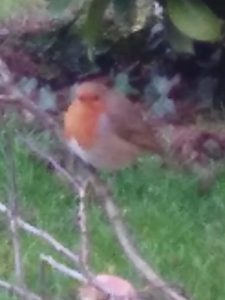
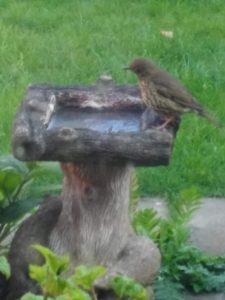
In the Garden
For many reasons, we should all get closer to our food sources and have a better understanding of the food systems and supply chains from plant to plate. I hope my food growing trials and tribulations help you get started or expand your efforts. If I could, it would be so much better to invite you for lunch!
The weather has been beautiful this week, it feels deceivingly like summer. The sunshine lifts our spirits and makes the lockdown less gloomy. As always, I am worried: have I been too enthusiastic and started too many seeds of one kind and not enough of another? A classic rookie mistake! Gardening feels like the ultimate in deadline pressure, if you don’t get it right, you don’t get to eat it and you have to wait a year to try again.
I had a chat with Cordelia, my friend who owns a market garden and sells weekly veg boxes in her community of Frome. She has sent me some spreadsheets and I am going to make a plan. Even when you try to get back to the soil, you can’t escape the computer. [Added later: here is my first remotely recorded video interview with Cordelia]
Planting strawberries
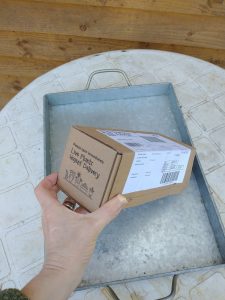
12 strawberry plants came in the post from the seed company.
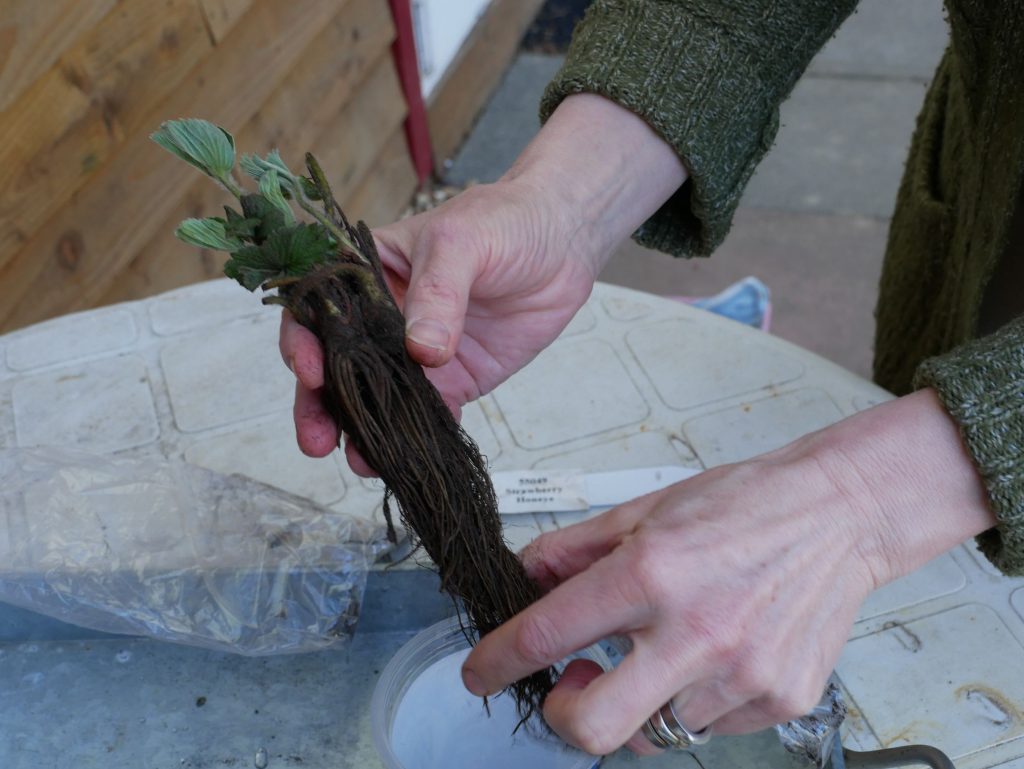
There were a few little leaves and lots of roots. I ordered three different varieties which fruit at different times.
- Florence – late fruiting
- Cambridge – mid fruiting
- Honeoye – early fruiting
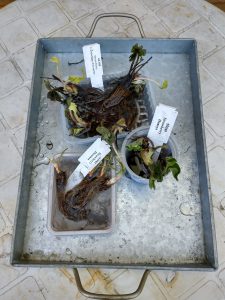
As per the directions, I soaked the roots in water for a few hours before planting.
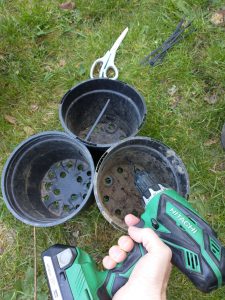
A friend gave me an old strawberry planter (see terracotta colour pots). To accommodate all 12 plants, I added an extra level made of black plastic pots which I zip tied together.
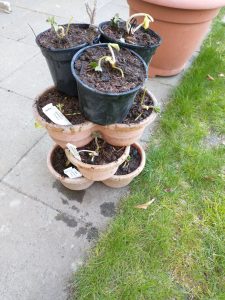
Here are all the baby strawberries planted out on four levels on the patio.
Cutting the hedge to make teepees for the beans
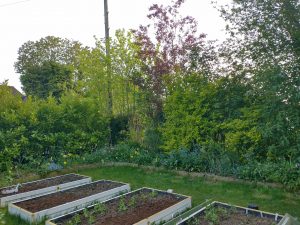
I forgot to trim the hedge around the front garden last year so there are quite a few long, slim tree branches which I plan to use to make what I call teepees for the beans to climb up.
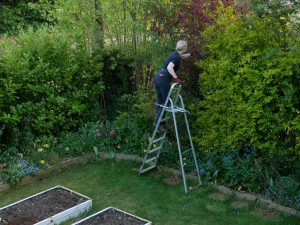
I used a small saw and some branch cutters to trim out a few straight branches.

All the extraneous branches and leaves were trimmed off.
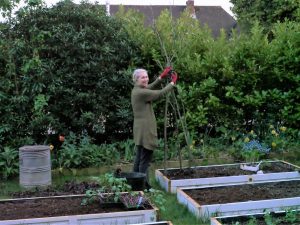
I leaned the branches all together and pushed them vigorously into the ground – while trying to remember where the potatoes were that I planted a couple of weeks ago so as not to skewer them. I secured the branches together with some kitchen twine.
Planting out beans
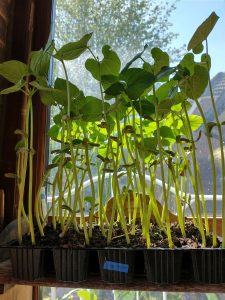
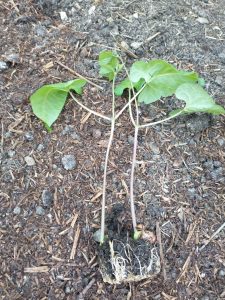
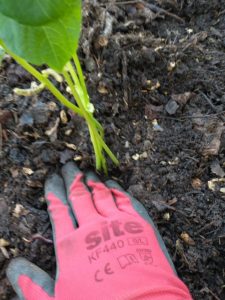
I opened the compost and dropped the bean in as far as it would go and then firmed or pressed the soil around the stems and root ball.
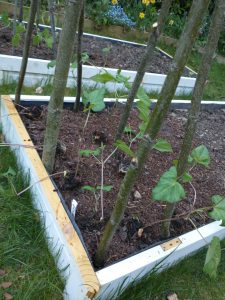
There are about three bean plants at the bottom of each pole.
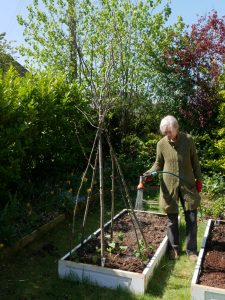
Finished teepees and trellis (on the left). I planted three types of beans:
- French Bean, Purple Cascade
- French Bean, Cobra
- Runner Bean, Firestorm
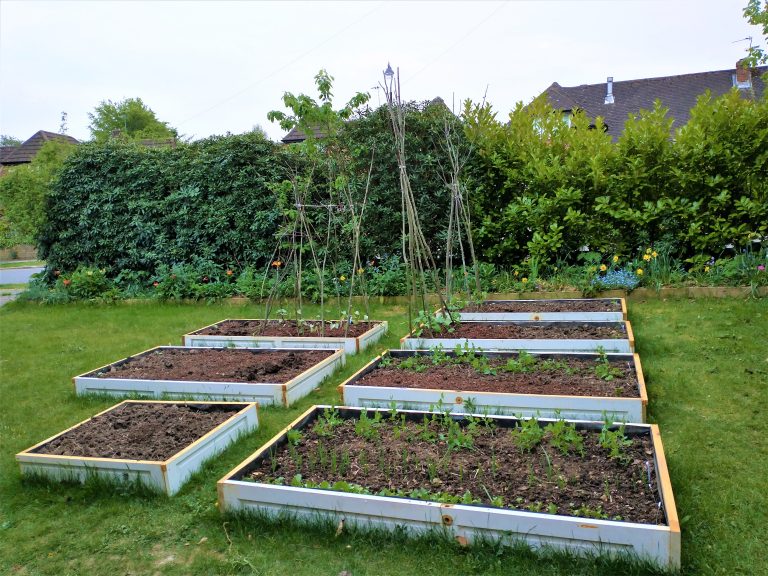
Make do tricks
Makeshift Cloches
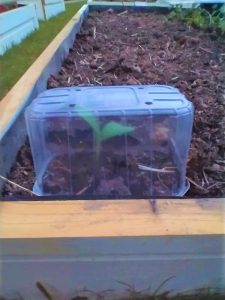
Squash plants under makeshift cloches, which used to be grape cartons.
Eggcarton Seed Trays
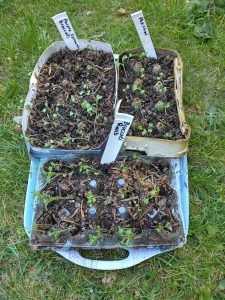
I didn’t have enough seed plug trays and so I adapted some egg cartons by building the sides up with cardboard and then filling them with soil. As they are cardboard, that helps to retain moisture and then each plug (really a single egg holder) can be torn away and planted out singly, which helps to not disturb the roots.
With the plastic egg carton I cut the top out and poked holes in the bottom of each egg cup for drainage.
Plant Labels
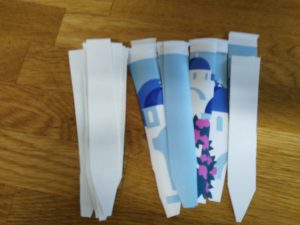
These labels are cut from a large yoghurt pot. I have also made some from peanut butter pots. You can use almost any discarded plastic pot or item as long as it is white on one side.
It is a good thing, this repurposing, because we have had rather sporadic rubbish and recycling collection during the lockdown. It is amazing how much our output has gone done with re-purposing and not going to the supermarket. All the fruit and veg I buy now is loose. It’s much nicer that way and is how things used to be before over-packaging became the norm.
Provisioning
This week I am thinking about those of us who are lucky enough to have access to some land so that we can grow some of our food. This means that more food will be available to those who cannot grow any substantial portion of their food. The irony is that many of those who have access to land also have plenty of money so don’t need to grow food because they can simply buy whatever they want even if it costs more. Others have neither land nor money. Growing food is therefore a moral duty and a decent and altruistic thing to do.
Click and Collect
Click and Collect is a three-part process. First you have to get a pick-up slot, which is not easy to do. Then you need to rush to fill your online basket within a short time limit, and then you need to pay. I finally got a slot at about midnight on Friday night. But I couldn’t pay because of congestion on the supermarket website, so the next night I had to stay up till two in the morning when I was at last able to make it all work and get the payment through.
Given how painful the process is, I have the dilemma of whether I should do a big shop and not need to go for a good long while, thereby leaving more spaces for others or should I do a small shop to ensure that I don’t take too much and leave enough for others. Hmm…

Entering Sainsbury’s there is a makeshift sign directing me to perform a handbrake turn into the hairpin bend that leads to the designated Click-and-Collect area of the parking lot.

A delivery van is full of all the orders awaiting collection by folks sitting patiently in their cars until their turn. The loading chap was usually a delivery driver and he was very friendly and amiable. He certainly was working hard.
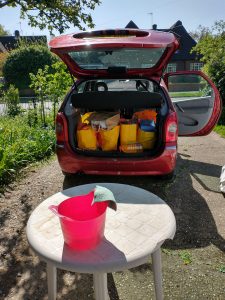
When I got my collection home I disinfected everything. I am so grateful the sun was shining.
Food of the Week
In this new world of cooking what you have to hand, you still need to ‘eat five a day’ or to put another way – Don’t forget the fruit and veg! I was running low on fresh fruit and veg when I remembered that I had lots of cans in the store cupboard and many freezer items which all count towards the five a day. So I made a tinned-peach cobbler and used the frozen spinach, sweet corn, and peas in stews and curries. When you are used to buying fresh it may be easy to disregard canned and frozen produce, but these can really bump up the nutrition. I also try to get some fruit into my eaters’ breakfasts. Raisins or prunes in porridge are pretty yummy.
Sprouting lentils
This feels like a cross between cooking and growing. Similar to sourdough starter, you need to attend to your seeds every day in order for them to sprout. But it is worth it and they are delicious.
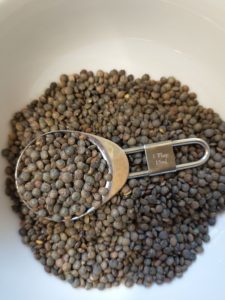
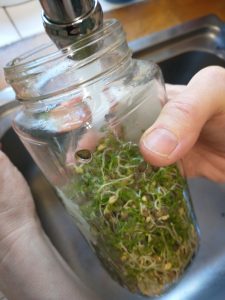
1. Put two tablespoons of lentils or other seeds into the bottom of a large clean jar.
2. Soak over night.
3. In the morning, drain them by putting a small sieve over the mouth of the jar.
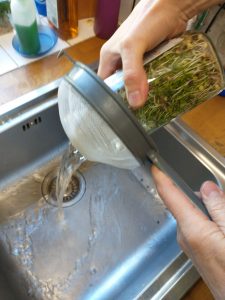
4. Rinse and sieve water out of the jar every morning.
5. Continue for about five days.
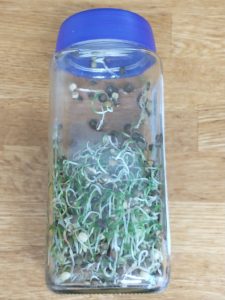
6. When you see lots of green bits on the sprouts, they are ready to eat! If you don’t want to eat them right away you can pop the jar of sprouts in to the fridge. They will keep for about four days.
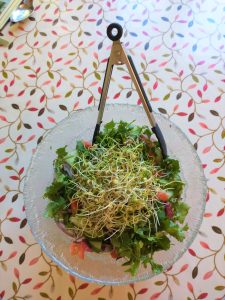
7. Eat! Here I topped a tossed salad with the Puy lentil sprouts.
Walnut Bread
Our comfort food. Walnut bread reminds me of some of the good things in Vancouver, when Julian and I got a ‘treat’ of Terra Walnut Bread from IGA on Main St and 13th. I make this loaf in my lovely bread machine on the French Bread setting. (https://www.terrabreads.com/artisan-products/)
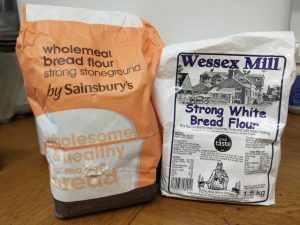
I use a mixture of flours. Usually 50% wholemeal bread flour and 50% white bread flour. But in these days of substitution and flour shortages we need to be flexible and creative.
I have enough left for a 50/50 loaf.
Recipe
- 450 g flour in any combination. Try and have at least half of bread flour.
- 1 teaspoon butter
- 1 teaspoon salt
- 1 cup of walnuts
- 320 ml of water (+ extra if using wholewheat or brown flour)
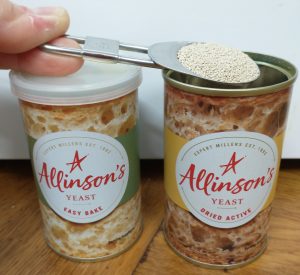
15ml / 1 Tablespoon of Yeast
I have had equal success with Easy Bake and Dried Active Yeast which is a good thing, because sometimes you can’t get one or the other.
Put the yeast in the bottom of the pan.
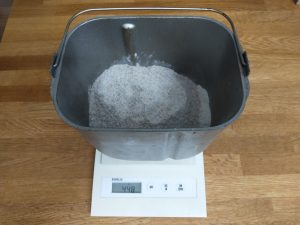
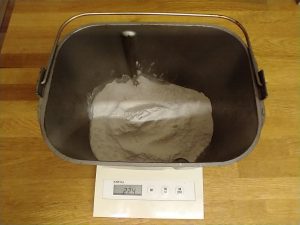
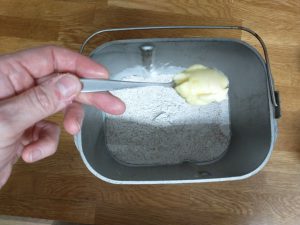
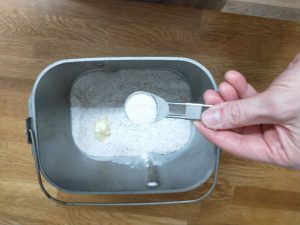
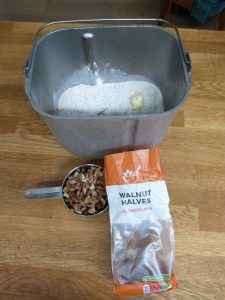
1 cup walnuts
Depending on your bread machine and how you like your walnuts, you can either put the walnuts in the pan or in the raisin tray. I always put the walnuts in the pan.
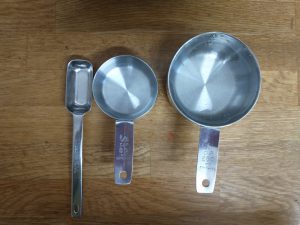
320 ml of water for 100% white flour
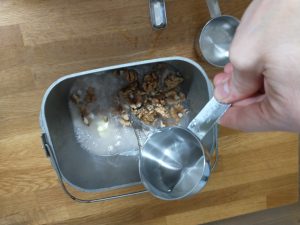
When you use wholemeal or brown flour, you need to add a bit more water so I add an extra tablespoon (15ml).
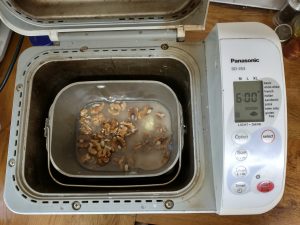
I use the French Bread setting which is 6 hours. This is the longest setting on the machine.
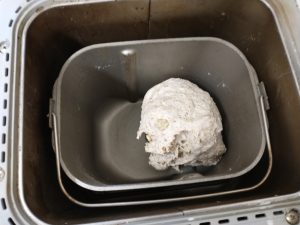
When the dough comes together, listen to the machine and if it is struggling, add another tablespoon of water.
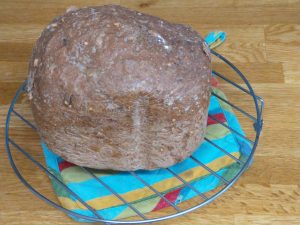
After the 6 hours and the machine has finished baking, take the bread out and let it cool on a rack.
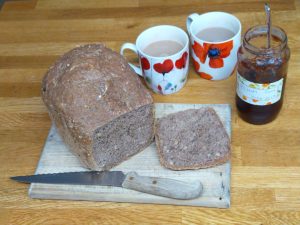
We enjoyed the bread with tea and plum jam made from local plums which Julian and I picked last summer.
(We ate it warm because we couldn’t wait.)
Gifts
20th Wedding Anniversary
April 22nd was our 20th wedding anniversary. I am very grateful for having such a caring and intelligent partner in life. We had a lovely celebration this year.

Earth Day's 50th Anniversary
It was also the 50th Anniversary of Earth Day. Here is a short history of the movement.(https://www.earthday.org/earth-day-50-years-on-qa-with-denis-hayes-coordinator-of-the-first-earth-day/)
Earth Day had to have a virtual celebration this year. https://www.earthday.org/

Anniversay & Earth Day Celebration lunch

Roast chicken, lots of veg, and a glass of wine to toast from one of our few remaining bottles!

A special cake baked by Raphael. It is a lemon poppy seed cake with drizzle on the top and butter cream icing and plum jam in the middle. Lovely walnuts decorate the edge with 20 iced in the middle!
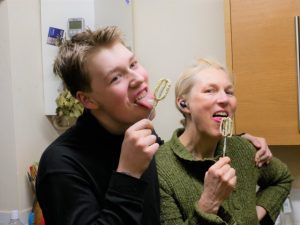
I had to assist Raphael in the most challenging part of the operation.
Listening and Reading
Podcast
A Taste of the Past – the episode from 25th April 2020 is called Comfort Food
- https://heritageradionetwork.org/podcast/comfort-food/
I loved thinking about comfort food and how it goes with nostalgia and conjuring up my childhood food memories of eating carrots and Swiss chard from the garden, peaches from our annual trip to the Okanagan and Grandma MacDonald’s chocolate chip cookies. Raphael also made baked potatoes this week and the delicious smell brought me right back to my parent’s restaurant in British Columbia. Raphael cut fresh chives from his grandfather’s garden and added them to Greek yoghurt, because we didn’t have sour cream. It was close enough and delicious.

Book
Salt Fat Acid Heat by Samin Nosrat
- https://www.saltfatacidheat.com/
I know this book has been out for a while – but I wanted to add my voice to say how wonderful it is. I love her approach to flavours and ingredients. For example: Samin Nusrat explains how to add the right amount of salt at the right time and she outlines the chemical functions of the salt on the food. It is a revelation – and it does make food taste better!
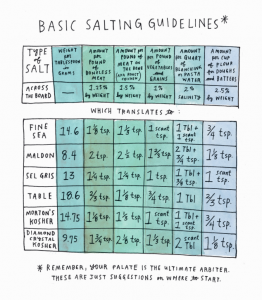
Disasters
My raspberries are not growing!
Dead plants are not much fun to look at and don’t give me much fruit either.
I received 12 Polka raspberry canes on 7 April. On the day they arrived I soaked, then planted the canes, as per the instructions (see photos). I have watered them regularly and checked the sub-surface soil moisture.
Today, 27th April, there are still no signs of sprouts anywhere on any of the canes and it has now been three weeks. You can see that some of the canes are split, surely indicating that they are dead. On another cane, I scraped a little of the bark off at the top and there is no green underneath, again indicating that it is dead.
I have written to the company to ask for some replacement plants. Live ones, this time. They have assured me they are sending some. (Update: as of May 10, I still have not received them.)
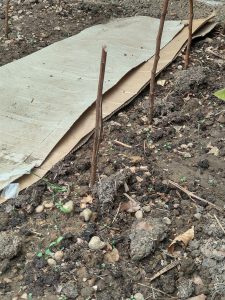
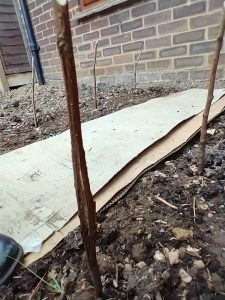
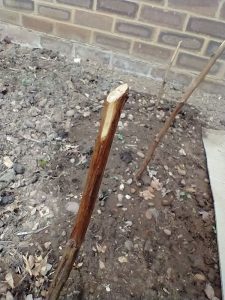
Daily walks




Flowers in our borders


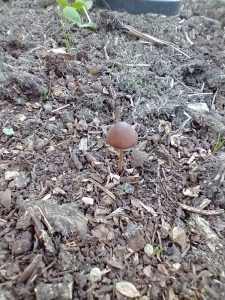


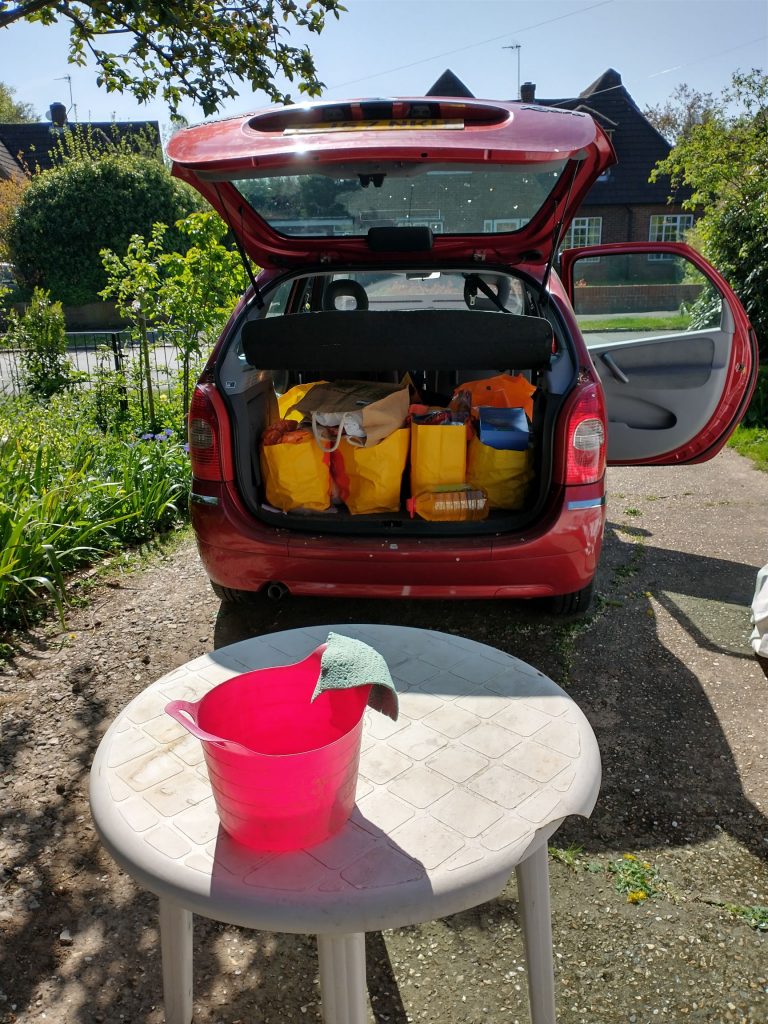
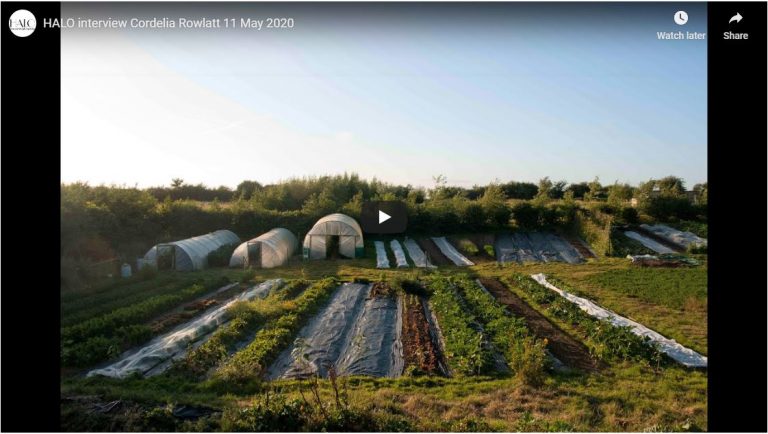
Well done, Celine- this is a wonderful and well presented compendium of local information and international too via the links! The interview with Cordelia Rowlatt covered a great deal in its seven minutes, flowed well, and was visually effective with its inserts. Good luck with the replacement raspberry plants.
Keep up the good work!
Thoroughly enjoyed reading this and watching the interview – picked up a few tips too!